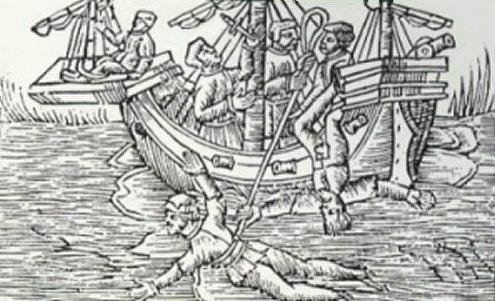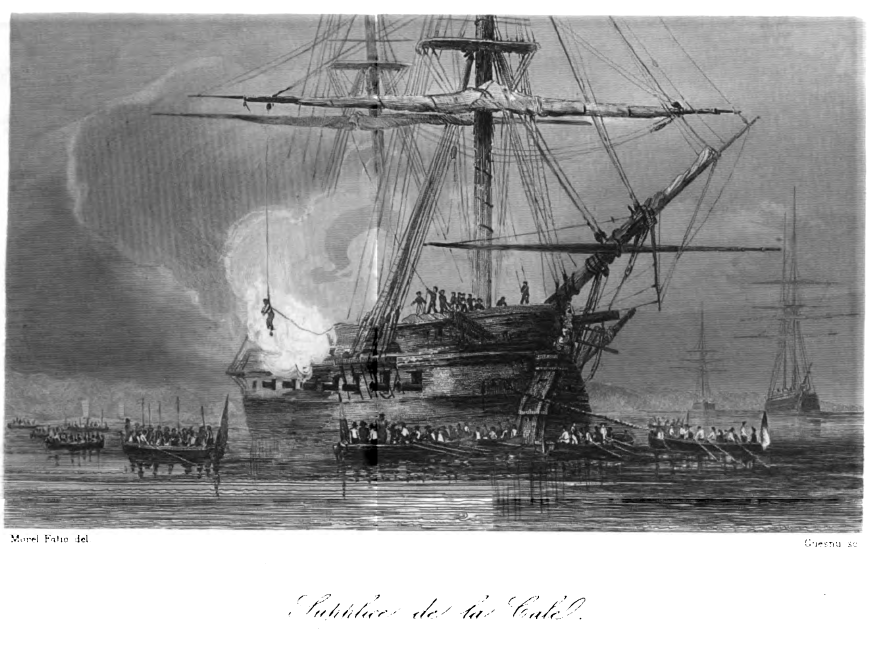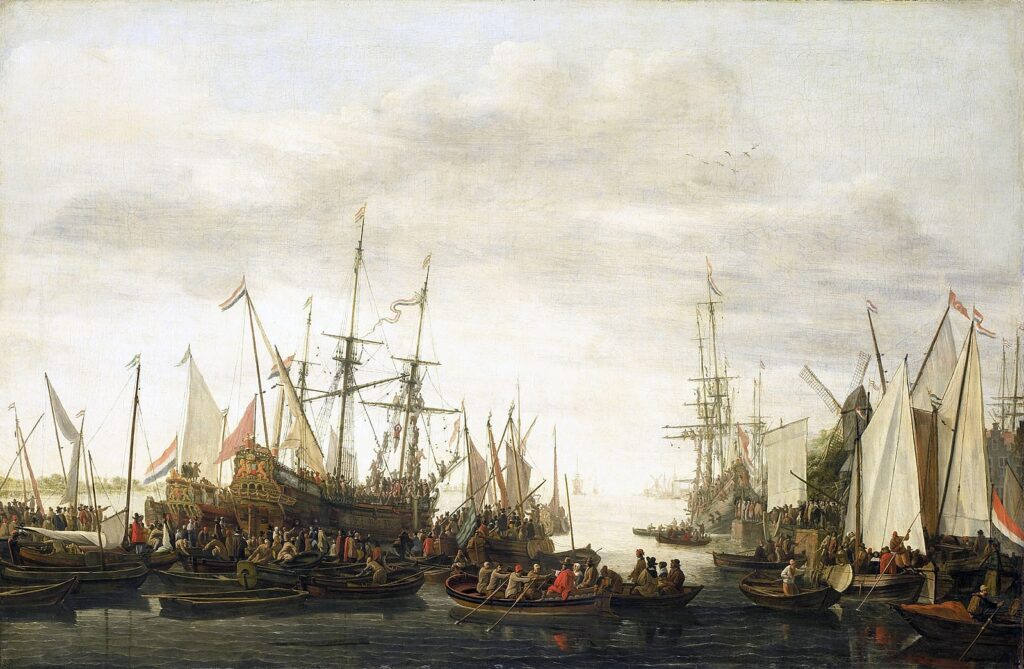It’s not a term that many people today are very familiar with because no one has been exposed to it. But, hundreds and even thousands of years ago, it was, unfortunately, one of the most barbaric and sadistic methods of torture ever imaginable.
Keelhauling is a word that in the 1800s would make you shudder and shake if you were a sailor. It was a type of punishment that tied a person up by a rope and dragged them along the bottom of the keel.
Before the process starts, the sailor is stripped, and his arms and legs are tied up so he cannot swim. A chain and cannonball are tied to his arms or legs, and two ropes to control him, one from the mast and another along the bottom of the boat.
The weight would pull the sailor to the bottom near the keel where he usually would sink and nearly drown, but the navy could pull on the second rope attached to his arm and pull him up.
This would force him to slam against the hull and experience excruciating pain and torture. Sometimes sharks would find themselves flesh to bite on, or barnacles cut deep into their skin, making the punishment worse.
If you ever saw Game of Thrones, it was like watching Theon Greyjoy be tortured by Ramsay Snow. He didn’t kill him, but he did everything in his power to make him suffer in the most gruesome of ways.
Keelhauling was a tactic that became most popular in the 1600s and 1700s, but its history goes much further back.

Keelhauling’s Torture
Keelhaul comes from the Dutch word “kielhalen,” which means “to haul under the keel of a ship.” The purpose of keelhauling wasn’t to kill a sailor, for this was always the easy way out.
Instead, it was to make them suffer as many injuries as they possibly could while keeping them barely alive. They would sometimes put them underwater for a couple of minutes, nearly drowning them to death, before pulling them up and then slamming them against the boat before moving them back down.
The speed at which the boat moved meant everything. The faster it moved, the worse the punishment.
Oil-soaked sponges were sometimes put in the victim’s mouth so they could catch some breath underwater, keeping them alive. It was like tying someone to the back of the car in today’s times and dragging them along the road.
After punishment, the sailor was brought up and inspected by the ship’s captain. If the captain wasn’t satisfied with the injuries, he sent the sailor back down to experience more pain.
According to the Universal Dictionary of the Marine in 1780, keelhauling was “plunging the delinquent repeatedly under the ship’s bottom on one side, and hoisting him up on the other, after having passed under the keel.”
Added to that, though, which shows the ultimate goal isn’t death, it says, “the culprit is allowed sufficient intervals to recover the sense of pain, of which indeed he is frequently deprived during the operation.”
Many times, though, the process did kill the victim, either by drowning, loss of blood, being eaten by sea creatures, or their heads being smashed to the point of death. Other times, they barely stayed alive and instead suffered mental torture and trauma for the rest of their life for what they endured.
The sailor also almost always lost limbs, including arms and legs, and experienced life-long physical injuries. They were held off the side of the ship as a warning to others of the penalties that would happen if they didn’t follow orders.

The History of Keelhauling
The first evidence of some form of keelhauling goes back to around 700 BC when the Greeks performed it in the Rhodian Maritime. Artifacts and vase art were produced that depicted this act.
There have been rumors that pirates did it as an alternative to walking the plank or hanging a prisoner, but there’s no official record of this.
However, the Dutch Navy was notorious for performing the act between 1560 and 1863, making it a very common practice. In 1652, under the command of Jan Van Riebeeck, a sailor was recorded to have been keelhauled and whipped with 150 lashes.
Following that, he was enslaved for two years. In 1673, Cornelis Evertsen the Youngest performed the most graphic and gruesome act of keelhauling by punishing two sailors who committed murder.
People saw this as an acceptable form of punishment back then because sailors were viewed as workers who had to perform their jobs and obey their superiors, and if they didn’t, they had to be punished.
The English Royal Navy was also said to have done it in the 16th and 17th centuries. Most felt like keelhauling died in the mid-1880s, and the British denied ever using the form of punishment after 1860.

However, in 1882, two Egyptian sailors were punished near Alexandria in Great Britain, as recorded in the Parliamentary Papers in the Great House of Commons. It was also witnessed by many who were horrified at what they saw.
“Yesterday I tried to write a description of a most horrible sight. It was so revoltingly cruel, so barbarous, so infamously brutal, that I gave it up,” the London Morning Advertiser wrote in 1882.
While keelhauling is no longer used, other methods of torture have been devised as a replacement. Birching was a technique used in the early 20th century, where a sailor was punished by being beaten with 12 to 24 strokes from a birch stick.
Today, many are familiar with waterboarding, which was used as an interrogation technique against terrorists to get information out of them. Again, the purpose of these punishments, like keelhauling, wasn’t to punish them but rather inflict enormous pain on the person.
References
“Keelhauling: Royal Navy Torture Technique.” TheWayofthePirates.com. Nd. http://www.thewayofthepirates.com/pirate-life/keelhauling/.
Goldfarb, Kara. “Keelhauling: Inside the Deranged Torture Method Used to Keep Sailors in Line.” AllThatsInteresting.com. 22 Oct 2023. https://allthatsinteresting.com/keelhauling.
Little, Becky. “7 Brutal Ways Sailors Were Punished At Sea.” History.com. 19 Sep 2023. https://www.history.com/news/navy-bread-and-water-ban-sailor-punishment.

